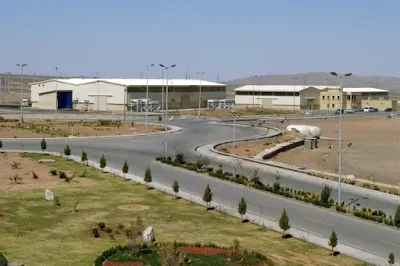Iran condemned a blackout at its underground Natanz nuclear facility early on Sunday as an act of “nuclear terrorism” and said Tehran reserves the right to respond, but did not specify who was responsible and how Iran may react.
“The act against the Natanz nuclear enrichment centre shows the defeat of the opponents of the country’s industrial and political advancements in preventing the nuclear industry’s significant development,” Ali Akbar Salehi, the head of the Atomic Energy Organization of Iran (AEOI), said on Sunday.
Salehi also directly linked the incident with the nuclear deal, saying it was perpetrated by those who oppose nuclear negotiations to lift US sanctions.
“While condemning this desperate move, the Islamic Republic of Iran emphasises the need for a confrontation by the international bodies and the (International Atomic Energy Agency) against this nuclear terrorism,” he said.
Parts of the electrical grid at Iran’s main nuclear facilities at Natanz were compromised early on Sunday, in the latest incident to hit the site in Isfahan province, where locally developed centrifuges are reportedly assembled after it was hit by a large explosion last July.
AEOI spokesman Behrouz Kamalvandi told Fars news agency earlier on Sunday that there was no loss of life or environmental pollution as a result of the incident.
After the explosion last year, Iran said “sabotage is certain”, adding there were strong suspicions that “internal agents” played a role.
But the government, citing security concerns, refrained from disclosing additional information on Sunday.
Malek Shariati Niasar, a Tehran-based lawmaker who serves as spokesman for the Iranian parliament’s energy committee, wrote on Twitter the incident was “very suspicious”, raising concerns about possible “sabotage and infiltration”.
He added lawmakers were pursuing details of the incident as well.
A spokesman for the UN nuclear watchdog said: “We are aware of the media reports. We have no comment at this stage.”
‘Terrorist move’
On Saturday, a part of the centrifuge assembly and evaluation site at the Natanz facilities was displayed on national television as Iran unveiled 133 “achievements” to celebrate its nuclear technologies day.
The engineer who made the presentation at the site told President Hassan Rouhani the “terrorist move” to blow up parts of the facility last July did not stop its progress.
Iran also began feeding gas to several all-Iranian centrifuges, including 164 IR6 machines, 30 IR5 centrifuges, and 30 IR6s centrifuges, and began mechanical tests on the advanced IR9 machine.
Israel’s Jerusalem Post, citing unidentified sources, reported the Sunday’s incident was not an “accident” and the damage is much worse than initially reported.
The development comes as Iran and world powers concluded on Friday the first week of “constructive” talks in Vienna to restore the country’s 2015 nuclear deal.
Natanz suffered a mysterious explosion at its advanced centrifuge assembly plant in July 2020 that authorities later described as sabotage. Iran now is rebuilding that facility deep inside a nearby mountain.
Israel, Iran’s regional archenemy, has been suspected of carrying out that attack as well as launching other assaults, as world powers now negotiate with Tehran in Vienna over its nuclear deal.
Iran also blamed Israel for the killing of a scientist who began the country’s military nuclear programme decades earlier.
The Stuxnet computer virus, discovered in 2010 and widely believed to be a joint US-Israeli creation, once disrupted and destroyed Iranian centrifuges at Natanz.
Israel has not claimed any of the attacks, though Prime Minister Benjamin Netanyahu repeatedly has described Iran as the major threat faced by his country in recent weeks.

